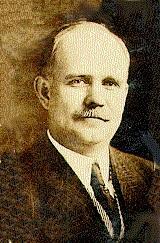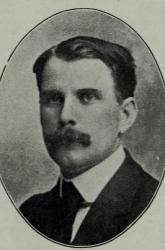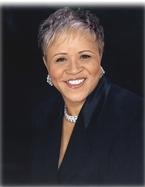Planning worship?
Check out our sister site, ZeteoSearch.org,
for 20+ additional resources related to your search.
- |
User Links
Person Results
B. D. Ackley

1872 - 1958 Person Name: Bently DeForest Ackley, 1872-1958 Meter: 10.10.10.8 with refrain Composer of "SUNRISE" in The Christian Hymnary. Bks. 1-4 Bentley DeForrest Ackley was born 27 September 1872 in Spring Hill, Pennsylvania. He was the oldest son of Stanley Frank Ackley and the brother of A. H. Ackley. In his early years, he traveled with his father and his father's band. He learned to play several musical instruments. By the age of 16, after the family had moved to New York, he began to play the organ for churches. He married Bessie Hill Morley on 20 December 1893. In 1907 he joined the Billy Sunday and Homer Rodeheaver evangelist team as secretary/pianist. He worked for and traveled with the Billy Sunday organization for 8 years. He also worked as an editor for the Homer Rodeheaver publishing company. He composed more than 3000 tunes. He died 3 September 1958 in Winona Hills, Indiana at the age of 85 and is buried in Oakwood Cemetery, Warsaw, Indiana, near his friend Homer Rodeheaver.
Dianne Shapiro (from ackleyfamilygenealogy.com by Ed Ackley and Allen C. Ackley)
B. D. Ackley
William C. Poole

1875 - 1949 Person Name: William C. Poole, 1875-1949 Meter: 10.10.10.8 with refrain Author of "When I Shall Come to the End of My Way" in The Christian Hymnary. Bks. 1-4 William C. Poole was born and raised on a farm in Maryland. His parents belonged to the Methodist church. He graduated from Washington College and became a Methodist minister in Wilmington, Delaware area. He was pastor of McCabe Memorial, Richardson Park and other churches. In 1913 he was superintendent of the Anti-Saloon League of Delaware. He wrote about five hundred hymns. The writing was done as recreation and a diversion from his pastoral work. His goal in writing as well as in being a minister was to help people.
Dianne Shapiro, from "The Singers and Their Songs: sketches of living gospel hymn writers" by Charles Hutchinson Gabriel (Chicago: The Rodeheaver Company, 1916)
William C. Poole
W. Howard Doane

1832 - 1915 Person Name: W. H. Doane Meter: 10.10.10.8 with refrain Composer of "LABOR ON" in Church Hymnal, Mennonite An industrialist and philanthropist, William H. Doane (b. Preston, CT, 1832; d. South Orange, NJ, 1915), was also a staunch supporter of evangelistic campaigns and a prolific writer of hymn tunes. He was head of a large woodworking machinery plant in Cincinnati and a civic leader in that city. He showed his devotion to the church by supporting the work of the evangelistic team of Dwight L. Moody and Ira D. Sankey and by endowing Moody Bible Institute in Chicago and Denison University in Granville, Ohio. An amateur composer, Doane wrote over twenty-two hundred hymn and gospel song tunes, and he edited over forty songbooks.
Bert Polman
============
Doane, William Howard, p. 304, he was born Feb. 3, 1832. His first Sunday School hymn-book was Sabbath Gems published in 1861. He has composed about 1000 tunes, songs, anthems, &c. He has written but few hymns. Of these "No one knows but Jesus," "Precious Saviour, dearest Friend," and "Saviour, like a bird to Thee," are noted in Burrage's Baptist Hymn Writers. 1888, p. 557.
--John Julian, Dictionary of Hymnology, Appendix, Part II (1907)
===================
Doane, W. H. (William Howard), born in Preston, Connecticut, 1831, and educated for the musical profession by eminent American and German masters. He has had for years the superintendence of a large Baptist Sunday School in Cincinnati, Ohio, where he resides. Although not a hymnwriter, the wonderful success which has attended his musical setting of numerous American hymns, and the number of his musical editions of hymnbooks for Sunday Schools and evangelistic purposes, bring him within the sphere of hymnological literature. Amongst his collections we have:—
(1) Silver Spray, 1868; (2) Pure Gold, 1877; (3) Royal Diadem, 1873; (4) Welcome Tidings, 1877; (5) Brightest and Best, 1875; (6) Fountain of Song; (7) Songs of Devotion, 1870; (8) Temple Anthems, &c.
His most popular melodies include "Near the Cross," "Safe in the Arms of Jesus," "Pass me Not," "More Love to Thee," "Rescue the Perishing," "Tell me the Old, Old Story," &c.
- John Julian, Dictionary of Hymnology (1907)
W. Howard Doane
Lucie Eddie Campbell
1885 - 1963 Person Name: Lucie E. Campbell, 1885-1963 Meter: 10.10.10.8 with refrain Author of "He'll Understand and Say “Well Done”" in African American Heritage Hymnal Lucie Eddie Campbell, April 30, 1885–January 3, 1963, one of nine children born to parents who were slaves in Mississippi. She moved to Memphis with her mother after her father died when she was two years old. Became first Music Director of newly formed Education arm for the new National Baptist Convention formed in 1916 in Memphis. In 1919 at a NBC convention in Atlantic City, Campbell introduced a young, blind singer, Connie Rosemond, who electrified the delegates with his rendition of Campbell’s first gospel hymn, “Something Within.”
Campbell met Rosemond on the famous Beale St in Memphis. She heard a man betting $10 that he could make the blind youngster “get down in the alley” an expression for singing the blues. The young man refused to sing, saying I’m trying to be a Christian in this dark world, and I believe I have found a way out of this darkness into light. I can’t explain it, but there’s something within me. His words inspired Lucy Campbell to write her first song, Something Within, which was the first gospel hymn written by a
black woman.
At this same convention in 1919, Campbell introduced singer Marion Anderson to the world as she accompanied her. Anderson would go to become a world-renowned classical contralto singer. Lucie Campbell was also good friends with Thomas A Dorsey, who wrote Peace in the Valley and Precious Lord, Take My Hand, was the first African American inducted into the Gospel Music H.O.F.
Jim Westmoreland from "Lucie E. Campbell: Baptist Composer and Educator," by Luvenia A. George and Ada Gilkey in The Black Perspective in Music, Vol. 15, No. 1 (Spring, 1987), pp. 24-49.
Lucie Eddie Campbell
Evelyn Simpson-Curenton

b. 1953 Person Name: Evelyn Simpson-Curenton, b. 1953 Meter: 10.10.10.8 with refrain Arranger of "WELL DONE" in African American Heritage Hymnal Evelyn Simpson Curenton (born 1953) is a leading African-American composer, pianist, organist, and vocalist.
Simpson Curenton began piano lessons at age 5, began to perform with the Singing Simpsons of Philadelphia, a family group, and earned a B.M., Music Education and Voice from Temple University.
She has been commissioned to write works for the American Guild of Organists, George Shirley, the late Duke Ellington, and her sister, the late Joy Simpson, arranged music for Kathleen Battle, Jessye Norman, and the Porgy and Bess Chorus of the New York Metropolitan Opera, and has performed with musical organizations such as Philadelphia's National Opera Ebony (later renamed Opera North).
Based in the Washington, D.C., area, Curenton is Music Director of the Washington Performing Arts Society's Men and Women of the Gospel and an associate of the Smithsonian Institution. She has given lectures and participated in workshops on early 18th-century black religious music and the music of African-Americans during the Civil Rights era.
--en.wikipedia.org
Evelyn Simpson-Curenton
C. R. Blackall

1830 - 1924 Meter: 10.10.10.8 with refrain Author of "In the Harvest Field" in Church Hymnal, Mennonite Blackall, Christopher Ruby, M.D., born in New York State, 1830, and educated for the medical profession. For 15 years he followed his profession, including service in the army during the civil war. Subsequently he managed, for 14 years, a branch of the Baptist Publication Society, taking at the same time great interest in Sunday School work. He edited the Advanced Bible Lesson Quarterly, for 3 years, and also Our Little Ones.
1. The prize is set before us. Heaven anticipated. This is one of Dr. Blackall's most popular hymns for children. It was written in 1874 for the Sunday School of 2nd Baptist Church, Chicago, Illinois, and set to music by H. R. Palmer. It first appeared in Palmer's Songs of Love for the Bible School, 1874, from whence it has passed into numerous collections, including I. D. Sankey's Sacred Songs and Solos, Lond., 1881.
2. Follow the paths of Jesus. Following Jesus. This is included in the Baptist Hymn [& Tune] Book, Phila., 1871, No. 701.
3. Do the right, never fear. Duty . In W. R. Stevenson's School Hymnal, Lond., 1880, No. 269.
-- John Julian, Dictionary of Hymnology (1907)
C. R. Blackall
Sundar Singh

1889 - 1929 Person Name: S. Sundar Singh Meter: 10.10.10.8 with refrain Author (attr.) of "I Have Decided to Follow Jesus" in Timeless Truths Simon Kama Marak (see Sadhu Sundar Singh) India 1889-1929. Born at Jorhat, Assam, India, the lyrics of this hymn were attributed as the last words of Nokseng, a Garo man, from a tribe of Meghalaya people then in Assam who converted to Christianity through efforts of an American Baptist missionary. It is said this person was reciting verses from the 12th chapter of John as he and his family were being killed by an Indian village chieftain, one by one.. first a child (shot with an arrow), then another, child, then the wife, then finally Nokseng, each time asked by the village chieftain to deny Jesus, but refusing to. After Nokseng was arrowed down, the chieftain, having a miraculous change of heart, is alleged to have said, “I, too, am now a follower of Jesus Christ, and the whole village accepted Jesus as Lord. An alternative tradition attributes the hymn to Simon Kama Marak, a missionary from Jorhat, Assam. Formation of these words into a hymn is attributed to the Indian missionary Sadhu Sundar Singh. The melody is also Indian, and entitled “Assam” after the region where the text originated. William Jensen Reynolds, an American hymnist in his own right, discovered the song in a collection of gospel songs published in Australia and included this song in his 1959 “Assembly songbook”. The hymn is cited as a prime example of decision theology, emphasizing the human will response rather than any action of God giving faith. Which of the above is the actual occurrence has not been determined.
John Perry
Sundar Singh
Haldor Lillenas

1885 - 1959 Meter: 10.10.10.8 with refrain Author of "Once I Was Bound By Sin's Galling Fetters" in Hymns of Faith and Life Rv Haldor Lillenas DMus Norway/USA 1885-1959. Born at Stord, near Bergen, Norway, his father sold their 15 acre farm in Norway and emigrated to the U.S., buying a farm in Colton, SD. After he built a sod house, the family (wife and three chldren) also came to SD in 1887. They moved to Astoria, Oregon in 1889, where Lillenas learned English and began writing song lyrics at an early age. In 1900 the family moved again to Roseville, MN, where he worked as a farm laborer and began attending a Lutheran high school at Hawick, MN. He sold a few songs at age 19. At age 21 he began writing more songs, encouraged by some earlier ones becoming popular (“He set me free” was one). His mother died in 1906 and his father returned to ND, but Lillenas decided to move back to Astoria, OR, to finish a chemical correspondence course he had been taking. There he found employment in a chemical factory. He started attending a Lutheran church, but one evening he heard the song, “Tell mother I’ll be there”, sung at a mission. It made him decide to commit his life to Christ. An elderly lady who worked there told him about Jesus, and he began attending the Peniel Mission, a holiness rescue mission in Astoria, OR. He started working at the mission himself. In 1907 he moved to Portland, OR, where he worked with the Peniel Mission there, the mission paying most of his expenses. He was appointed leader of the mission. He saw many there come to know Christ and felt called to the Lord’s work. He joined the First Church of the Nazarene in Portland. Soon he enrolled in a ministerial course of study by correspondence. Soon afterward, he joined a vocal group associated with the Salvation Army called the ‘Charioteers Brigade’, which held street meetings and revival services throught much of CA. As a result of generous donations made, and efforts by his pastor, A O Hendricks, he was able to attend Pacific Bible College (later renamed Pasadena College), Los Angeles, CA. He also found part-time work to help support himself. He was soon a music director at a local church, and was preaching and writing songs. He also studied voice at the Lyric School of Music in Los Angeles, CA. While at Deets, he met and married Bertha Mae Wilson, also on an evangelistic team. Both preached. She was a songwriter like he. They practiced music at her father’s house and found that their voices blended well. They had two children: Evangline, and Wendell. They eventually became elders in the Nazarene Church, and she eventually became an ordained minister as well. He also studied music at the Siegel-Myers School of Music Chicago, IL. He composed songs for cantatas, Christmas, Easter, and special day services. He also used several pseudonyms in their composition. He traveled as an evangelist, then he pastored several churches (1910-1924) at Lompoc, CA, then Redlands, CA, and later in Indianapolis, IN. While there, In 1924, he founded the Lillenas Music Company (bought by the Nazarene Publishing Company in 1930). His wife preached at their pastorate until he was able to get the company up and running. While they owned the company, they published more than 700,000 hymnals. He worked as an editor there (after selling his company) until his retirement in 1950, becoming an advisor for them until his death. Also that year Lillenas purchased a 500 acre rural estate in Miller County, MO, where they built an Ozark home called ‘Melody Lane’. Lillenas joined the American Society of Composers, Authors, and Publishers (ASCAP) in 1938. In 1941 he received an honorable doctorate degree from Olivet Nazarene College, Bourbonnais, IL. In 1945 Bertha died of cancer, and later that year Lillenas remarried to a Lola Dell, and they lived in Melody Lane until 1955, when they moved to Pasadena, CA, attending the Nazarene Church there. They also made three trips to Norway after his retirement, and he wrote three books during that time: “Modern gospel song stories (1952), “Down Melody Lane (an autobiography): (1953), “Motoring 11,000 miles through Norway-A guide for tourists” (1955). In 1955 they toured Israel and sponsored a Palestinian Greek Orthodox family he had met as immigrants to the US that included Sirhan Bishara Sirhan (born in 1944). After they arrived in Pasadena, the Sirhan family stayed with Lillenas for several months, after which the Sirhans moved to a home Lillenas rented and furnished to them. When Mary Sirhan’s husband abandoned her and her two sons and returned to Jordan, Lillenas ensured that they were able to remain in the US. S B Sirhan was the convicted killer of Robert Kennedy. Lillenas wrote some 4000 hymn lyrics, supplying some for evangelists. Four of his song books contain his hymns: “Special sacred songs” (1919), “New Sacred Songs”, “Strains of love”, and “Special sacred songs #2”. He died at Aspen, CO. He is buried at Kansas City, MO. He was an author, editor, compiler, composer, and contributor. He edited and compiled over 50 song books.
John Perry
Haldor Lillenas
John J. Overholt
1918 - 2000 Meter: 10.10.10.8 with refrain Harmony Arr. for mixed voices of "SUNRISE" in The Christian Hymnary. Bks. 1-4 John J. Overholt was born to an Amish family of limited means in the state of Ohio in 1918. As a child he was soon introduced to his father's personal collection of gospel songs and hymns, which was to have a marked influence on his later life. With his twin brother Joe, he early was exposed to the Amish-Mennonite tradition hymn-singing and praising worship.
An early career in Christian service led to a two-year period of relief work in the country of Poland following World War II. During that interim he began to gather many European songs and hymns as a personal hobby, not realizing that these selections would become invaluable to The Christian Hymnary which was begun in 1960 and completed twelve years later in 1972, with a compilation of 1000 songs, hymns and chorales. (The largest Menn. hymnal).
A second hymnal was begun simultaneously in the German language entitled Erweckungs Lieder Nr.1 which was brought to completion in 1986. This hymnal has a total of 200 selections with a small addendum of English hymns.
Mr. Overholt married in 1965 to an accomplished soprano Vera Marie Sommers, who was not to be outdone by her husband's creativity and compiled a hymnal of 156 selections entitled Be Glad and Sing, directed to children and youth and first printed in 1986.
During this later career of hymn publishing, Mr. Overholt also found time for Gospel team work throughout Europe. At this writing he is preparing for a 5th consecutive tour which he arranges and guides. The countries visited will be Belgium, Switzerland, France, Germany, Poland, USSR and Romania.
Mr. Overholt was called to the Christian ministry in 1957 and resides at Sarasota, Florida where he is co-minister of a Beachy Amish-Mennonite Church.
Five children were born to this family and all enjoy worship in song.
--Letter from Hannah Joanna Overholt to Mary Louise VanDyke, 10 October 1990, DNAH Archives. Photo enclosed.
John J. Overholt


 My Starred Hymns
My Starred Hymns


